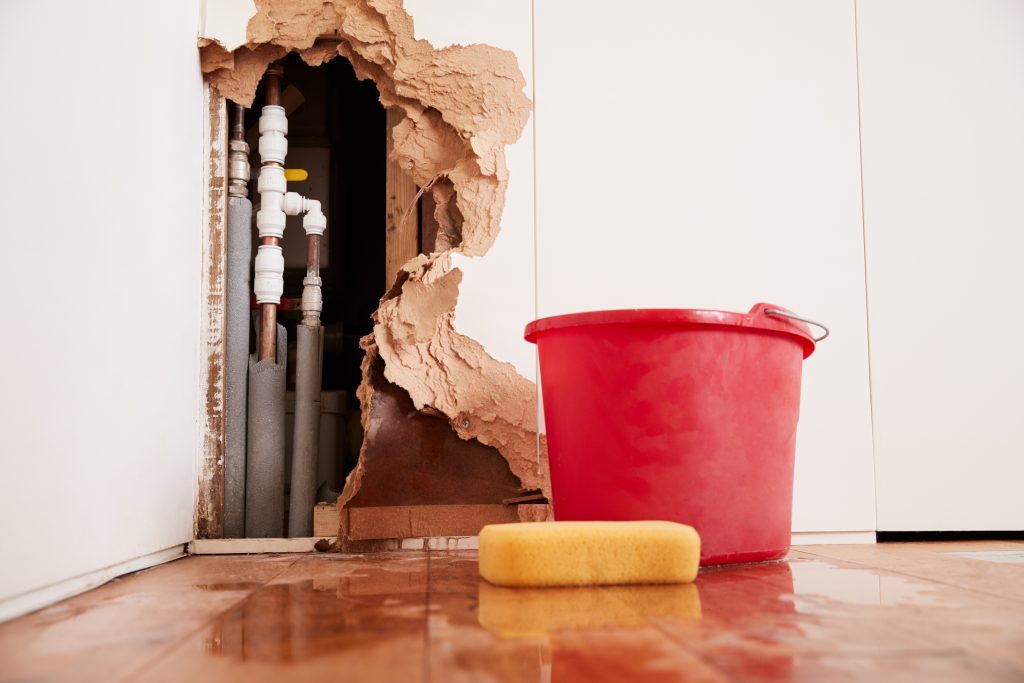How to Check If Your Residence Has a Surprise Leakage
How to Check If Your Residence Has a Surprise Leakage
Blog Article
Everyone seems to have his or her own way of thinking about Locating water leaks.

Early discovery of leaking water lines can reduce a possible catastrophe. Some tiny water leakages may not be noticeable.
1. Examine the Water Meter
Every residence has a water meter. Checking it is a proven way that assists you discover leaks. For beginners, turn off all the water sources. Make certain no person will flush, make use of the tap, shower, run the washing maker or dish washer. From there, go to the meter as well as watch if it will certainly transform. Since nobody is utilizing it, there need to be no motions. That shows a fast-moving leak if it moves. If you find no adjustments, wait a hr or 2 as well as inspect back once again. This suggests you might have a sluggish leakage that can also be below ground.
2. Check Water Intake
If you find abrupt changes, in spite of your intake being the same, it implies that you have leakages in your plumbing system. An abrupt spike in your costs indicates a fast-moving leak.
At the same time, a steady rise on a monthly basis, even with the same practices, shows you have a sluggish leak that's likewise slowly intensifying. Call a plumber to completely check your residential property, specifically if you feel a warm location on your flooring with piping underneath.
3. Do a Food Coloring Test
30% comes from commodes when it comes to water usage. Test to see if they are running effectively. Decrease specks of food shade in the tank and also wait 10 minutes. If the shade somehow infiltrates your dish during that time without flushing, there's a leakage between the container and dish.
4. Asses Outside Lines
Don't neglect to inspect your outdoor water lines also. Must water seep out of the link, you have a loose rubber gasket. One little leakage can waste tons of water as well as spike your water expense.
5. Inspect as well as Analyze the Circumstance
Homeowners must make it a practice to examine under the sink counters and even inside cupboards for any kind of bad odor or mold development. These 2 warnings indicate a leak so timely focus is required. Doing routine examinations, even bi-annually, can save you from a major issue.
Extra importantly, if you know your home is already old, maintain a watchful eye on your heating systems, tubes, pipelines and so on. Look for stainings as well as compromising as many devices as well as pipes have a life expectancy. They will certainly likewise naturally deteriorate as a result of tear as well as wear. If you think dripping water lines in your plumbing system, do not wait on it to intensify. Call a specialist plumber right now so you do not wind up with a dreadful mess in your home.
Early detection of dripping water lines can minimize a potential disaster. Some tiny water leakages might not be noticeable. Examining it is a surefire method that assists you find leakages. One little leakage can waste lots of water as well as increase your water costs.
If you believe dripping water lines in your plumbing system, do not wait for it to rise.
WARNING SIGNS OF WATER LEAKAGE BEHIND THE WALL
PERSISTENT MUSTY ODORS
As water slowly drips from a leaky pipe inside the wall, flooring and sheetrock stay damp and develop an odor similar to wet cardboard. It generates a musty smell that can help you find hidden leaks.
MOLD IN UNUSUAL AREAS
Mold usually grows in wet areas like kitchens, baths and laundry rooms. If you spot the stuff on walls or baseboards in other rooms of the house, it’s a good indicator of undetected water leaks.
STAINS THAT GROW
When mold thrives around a leaky pipe, it sometimes takes hold on the inside surface of the affected wall. A growing stain on otherwise clean sheetrock is often your sign of a hidden plumbing problem.
PEELING OR BUBBLING WALLPAPER / PAINT
This clue is easy to miss in rooms that don’t get much use. When you see wallpaper separating along seams or paint bubbling or flaking off the wall, blame sheetrock that stays wet because of an undetected leak.
BUCKLED CEILINGS AND STAINED FLOORS
If ceilings or floors in bathrooms, kitchens or laundry areas develop structural problems, don’t rule out constant damp inside the walls. Wet sheetrock can affect adjacent framing, flooring and ceilings.
https://www.servicemasterbyzaba.com/blog/how-to-detect-water-leakage-in-walls/

We had been shown that report on Leaking water lines from an acquaintance on our other site. Sharing is caring. Helping others is fun. Thanks for going through it.
Report this page